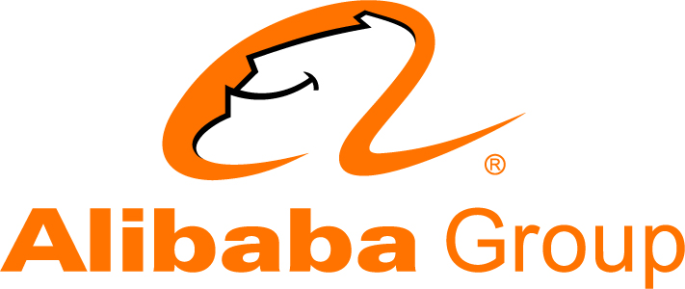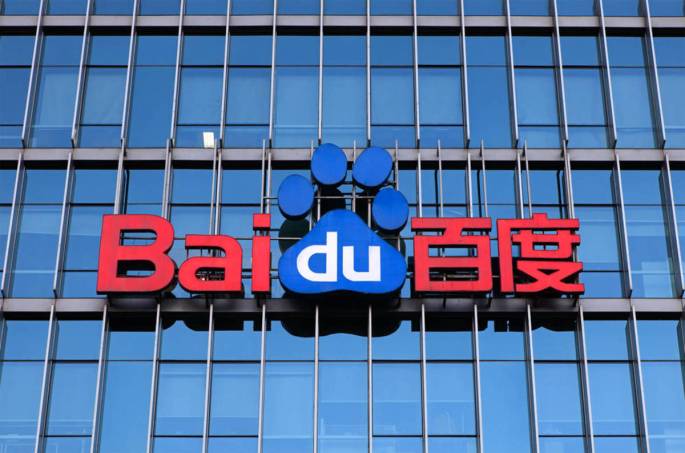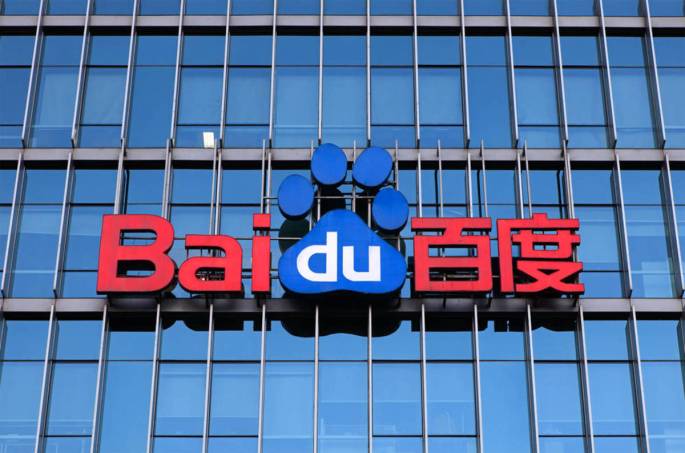Ali baba is China’s AMazon. The Biggest Ecommerce web portal in the both B2B, B2C ,C2B Marketing Domain.

Read my case study of Ali baba.
Want me to market your business online?
Send me a message at http://m.me/kkbhardwaj7
OR mail me at kaushalkishorbhardwaj@gmail.com Table of Contents S.No Topic Page Number 1. Introduction 2. History 3. Business Model 4. Products and Services 5. Target Users 6. Payment Methods 7. Comparison of Alibaba with other TechGiants 9. References
Alibaba A marketplace, a search engine and a bank, all in one. Alibaba is China’s and by some measures, the world’s biggest online commerce company. Its three main sites — Taobao, Tmall and Alibaba.com — have hundreds of millions of users, and host millions of merchants and businesses. Alibaba handles more business than any other ecommerce company. One can think of it as a mix of Amazon.com, eBay and Paypal. Customers use Alibaba to shop online, sell unwanted goods and make online payments. Alibaba has two retail sites: Taobao, which features thousands of nonbrand name products sold by smaller merchants; and Tmall, which offers brandname products sold by big merchants. Unlike Amazon, which buys goods from suppliers and sells them to customers, Alibaba has always acted as a middleman, connecting buyers and sellers and facilitating transactions between them. This Chinese B2B trading platform connects buyers in North America and Europe with suppliers from China. Alibaba follows an aggregation of supply model (similar to other early B2B players), helping to solve the pain of global sourcing.
History Alibaba Group was established in 1999 by 18 people led by Jack Ma, a former English teacher from Hangzhou, China. From the outset, the company’s founders shared a belief that the Internet would level the playing field by enabling small enterprises to leverage innovation and technology to grow and compete more effectively in the domestic and global economies. Jack Ma named his company on “Alibaba Open Sesame”. Alibaba is a kind, smart business person, and he helped the village. Alibaba opens sesame for smallto mediumsized companies. During Late 90’s, Alibaba Group raised a total of US$25 million from SoftBank, Goldman Sachs, Fidelity and some other institutions. After Alibaba achieved profitability in 2001, it’s sister organization Taobao was founded as a consumer ecommerce platform. Which further established TMall (TMall.com), a retail website, to complement its C2C marketplace. After about a decade since its inception Alibaba group also betalaunched eTao as a shopping search engine. Alibaba raised $21.8 billion in its debut, making it the biggest U.S.listed IPO in history after the IPO of credit card processing company Visa in 2008.
- Business Model The initial business model of Alibaba was simple ; a facilitate a 24/7 meeting platform for suppliers and buyers around the world. From the start Alibaba did not just connect Chinese suppliers with international buyers, but it had the goal of connecting all importers and exporters around the world to each other. Although other B2B websites have always said “You cannot have a global company out of china , it makes no sense.”. From the very beginning Alibaba was , “the first global Internet emerging from china.” In more technical terms three of the most prominent business models employed by Alibaba are: B2B, C2C and B2C. B2B: Alibaba.com Limited the primary company of Alibaba, is the world’s largest online businesstobusiness trading platform for small businesses. Founded in Hangzhou in eastern China, Alibaba.com has three main services. The company’s English language portal Alibaba.com handles sales between importers and exporters from more than 240 countries and regions. The Chinese portal 1688.com was developed for domestic businesstobusiness trade in China. In addition, Alibaba.com offers a transactionbased retail website, AliExpress.com, which allows smaller buyers to buy small quantities of goods at wholesale prices. According to some ecommerce analysts. Alibaba is probably the one organization in the world, which has been able to successfully provide a hassle free platform to small to medium sized businesses to carry on over the internet. C2C: Taobao, is Alibaba’s yet another portal, which utilizes consumertoconsumer model similar to eBay. Taobao.com is China’s largest shopping website, and tmall.com, which offers a wide
- selection of branded goods to China’s emerging middle class. It features thousands of nonbrand name products sold by smaller merchants With around 760 million product listings as of March 2013, Taobao Marketplace is one of the world’s top 10 most visited websites according to Alexa. B2C: In 2008, Alibaba Group also established another online website Tmall, to compliment it’s C2C market. Although Tmall is mainly a businesstoconsumer platform is known for offering brandname products. The two sites (Taobao.com and Tmall) are hugely popular, and collectively account for more than half of all parcel deliveries in China. According to The Wall Street Journal, their combined transaction volume in 2012 topped one trillion yuan ($163 billion), more than Amazon and eBay’s revenue combined. Tmall marketplace is China’s largest businesstoconsumer (B2C) onlineshopping venue. The site allows visitors to quickly view vendor fees, required deposits and other factors associated with operating a Tmall storefront.
- Products and Services Alibaba provides a wide variety of products and services through its various online portals. Some of these are: ● Apparel, Textiles & Accessories ● Auto & Transportation ● Electronics ● Electrical Equipment , Components & Telecom ● Gift, Sports & Toys ● Health & Beauty ● Home , Lights & Construction ● Jewelry, Bags & Shoes ● Machinery, Hardware & Tool ● Metallurgy, Chemicals, Rubber & Plastics ● Packaging, Advertising & Office ● Online marketing ● Cloud Computing ● Logistics Operations ● Electronic Payment Services Alibaba is one of those online resources which claims a “Get everything and anything” availability. A consumer can literally buy products ranging to simple toys to automobiles. Hence, Alibaba is proving to be a onestop platform where a consumer can choose among a wide variety of options.
- Target Users Alibaba Group primarily operated within China, where ecommerce is synonyms to Alibaba. But within last decade Alibaba has expanded to almost all the corners of the world, consisting its user base from about 190 odd countries. Alibaba has been turned into a global organization but still holding China as it’s major focus. Almost 75% of China’s ecommerce market is dominated by Alibaba. China has 560 million internet users twice as many as the U.S. who spend an average of 20 hours a week online. Although to get a hold on other emerging markets Alibaba Group has also established offices in the U.S., U.K., India, Japan and Korea. Apart from smalltomedium businesses Alibaba group also provides online platform to individual customers through its parent websites Tmall.com and Taobao.com.
- Payment Methods Actually Alibaba Group has it’s own payment solution named as Alipay, is a thirdparty online payment platform with no transaction fees. Other than that, Alibaba also offers many ways to pay suppliers. Six most commonly used ways are Telegraphic Transfer(TT)/Bank Transfer , Letter of Credit, DA/DP, Western Union, PayPal and Escrow. Buyers are advised to consider each option carefully before committing to one. S.NO Methods Conditions Description 1. 30% Upfront TT For buyers: 2.5 out of 5 stars For suppliers: 4.5 out of 5 stars Since many factories need money in advance to buy material for production, 30% Upfront TT is a common payment term for suppliers, especially when dealing with an unknown buyer. 2. 100% Upfront TT For buyers: 1 out of 5 stars For suppliers: 5 out of 5 stars The supplier gets full payment before production starts. This payment method bears the same risk as Western Union and is not recommended when dealing with an unknown supplier. 3. 100% Backward TT For buyers: 4.5 out of 5 stars For suppliers: 2 out of 5 stars If being paid after preshipment inspections, it is suggested to use trade terms of FOB. If being paid after receipt of merchandise, it is nearly 100% reliable for buyer cause buyer can cover the whole risk, however, on the opposite, suppliers are not willing to accept this way due to big potential risk of dispute or fraud. 4. Letter of Credit For buyers: 4 out of 5 stars For suppliers: 4 out of 5 stars Highly recommended for transactions that are US $20,000 and above because the bank guarantees the transaction. But complex procedures and high threshold of registered finance may prevent some SMEs from being involved. 5. Western Union For buyers: 0 out of 5 stars Not recommended when it comes to paying suppliers if the payment is not protected by
- For suppliers: 5 out of 5 stars escrow on a transaction made online through AliExpress. However, it’s useful when transferring money to known individuals such as family members. 6. Paypal For buyers: 5 out of 5 stars For suppliers: 3 out of 5 stars A popular payment method for buyers as it presents a much lower risk to them. However, it is less popular with suppliers due to difficulties in money withdrawal, high tax rates and uncertain claim of charge back from some notorious importers 7. Escrow For buyers: 5 out of 5 stars For suppliers: 3 out of 5 stars Money is only paid to the supplier after the buyer confirms satisfactory delivery of his/her order. A safe way to buying and selling online because Escrow protects both the buyer and supplier. In terms of innovation, Alibaba is introducing a new secure mobile payment method as it gets ready for its IPO.The Chinese ecommerce giant will get ahead of its competitors Amazon, Google and Paypal with an innovative and secure method of payment using fingerprints instead of passwords. “The biometric technology, including encryption and authentication managed by Huawei, will allow mobile users to confirm payments for a wide variety of goods and services with their smartphones simply by swiping a digit instead of entering a lengthy code,” the company says on its blog. Huawei, the world’s thirdlargest smartphone vendor by shipment volume , will also employ highlevel encryption and verification to ensure only approved thirdparty applications, such as Alipay Wallet, are allowed to access the fingerprint information for transactions. It’s worth remembering that Alibaba is a pretty safe platform to purchase on. Not only do you have the standard protection that your payment provide gives, but Alibaba hold mostly all
- payments in Escrow until the buyer confirms they’ve received the goods and they’re as expected. Until the buyer confirms receipt the seller doesn’t receive the funds. Alibaba also offers some tips for shipping methods:● Using express companies such as FedEx or DHL You can open the shipment in front of the delivery person. If the item is not what you ordered or if the item is defective due to handling, you have the right to return it to the delivery person. ● Using sea freight shipping method If the item that you received is not what you ordered, do not clear customs! You can always request for a customs officer or a thirdparty inspection company to conduct an onsite inspection before being issued a customs clearance certificate. If you only inspect the delivery after customs clearance, you might encounter legal hurdles should you decide to dispute the delivery.
- Comparison of Alibaba with Other TechGiants Alibaba is really a technology company that serves retail customers and controls 80% of the Chinese ecommerce market.Alibaba will compete most directly with online retailers like Amazon, EBay or Zalando in Europe, Rakuten in Japan, Kobo in India, Wuaki in Spain and other major online providers with strong presence in their home and adjacent markets. Take market capitalization, or the total value of available shares times the value of a single share , Alibaba’s market capitalization value is estimated at $155 billion. That number makes it look pretty small compared to the top three US tech giants: Apple ($593 billion), Google ($400 billion), and Microsoft ($378 Billion). But it compares nicely to Amazon, which also has a market cap in the $150billion range. And it’s growing. Fig : Revenues of various famous Techgiants
- The comparison is not exactly applestoapples. Alibaba’s business model is similar to that of Ebay, in that it is a middleman coordinating sellers and buyers. Alibaba doesn’t house and manage any products itself. “Gross Merchandise Volume (GMV), the metric the company likes to highlight, is the total sum of goods and services transacted on all its sites.” In 2013, Alibaba hosted GMV of $248 billion in transactions last year. That’s more than Amazon and eBay managed to do — combined. And while Amazon takes home a lot more revenue than Alibaba from its fewer transactions, Alibaba takes a much higher net income from its revenue than Amazon. Alibaba now takes home 80 percent of its revenue as profit.
- Alibaba’s revenue is the cut it takes out of each sale. In comparison, WalMart’s nearly $250 billion in revenue represents the total value of all the goods purchased along with its builtin margins.This shows how complicated it is to value Alibaba. To really understand how big a deal Alibaba is you’ve got to understand the growth of China’s ecommerce economy and the stronghold that Alibaba has on it. China has over 618 million internet users and they’re spending lots of money. That’s twice the population of the United States, but only half China’s total population. So there’s lots of room for growth in a sector that’s already exploding. In 2010, China’s ecommerce market was $74 billion dollars. In 2013, it was $295 billion. By 2017, it’s estimated to reach $713 billion. And Alibaba is cashing in big time. It controls 80 percent of online sales. Even though it’s not yet putting up the gross revenue numbers of Amazon and Apple, its 80 percent control of the market and 80 percent profit take from its revenue adds up to a huge, massive, crazy, growing amount of money. thank you……
























 Send me a message at
Send me a message at